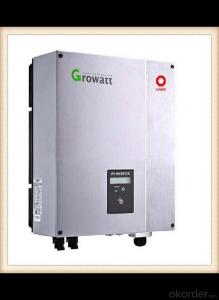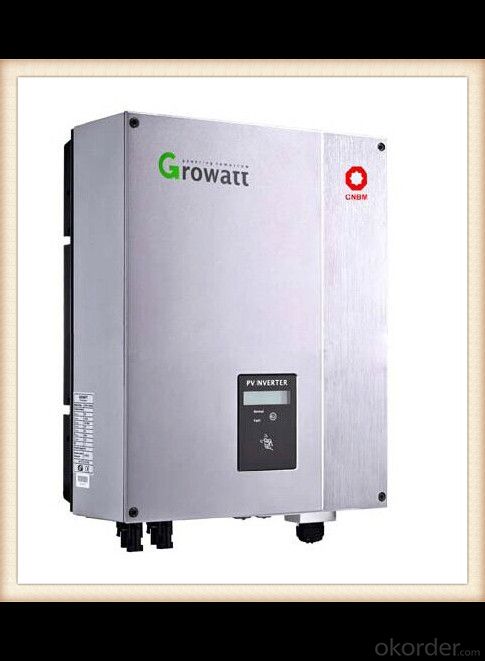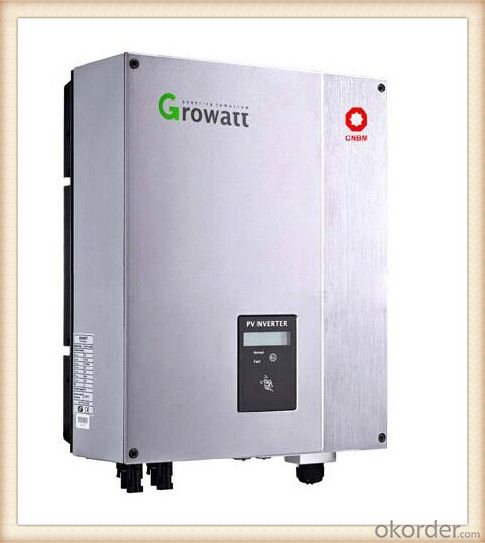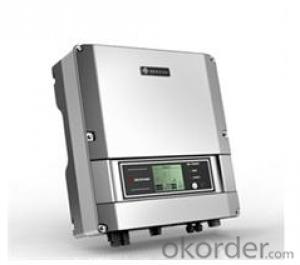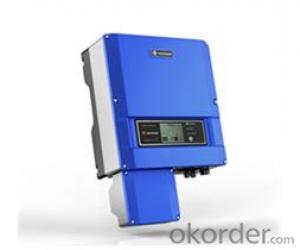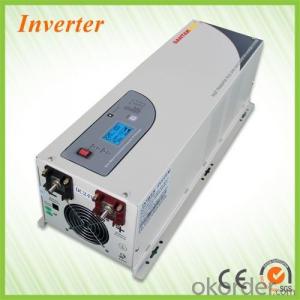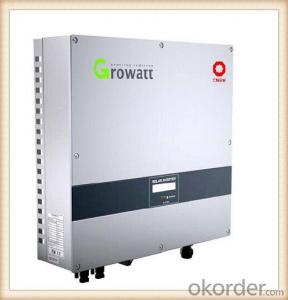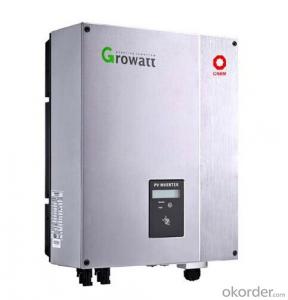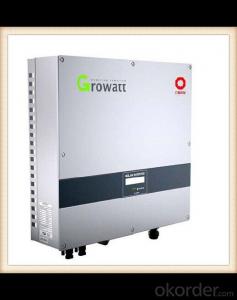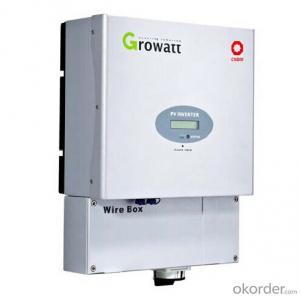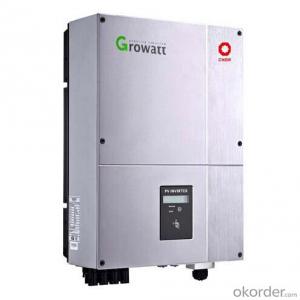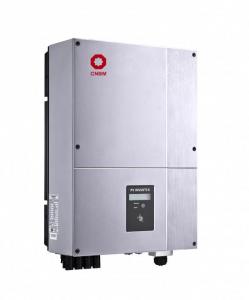Solar Inverter Canada - CNBM-4400TL Grid-Tie Solar Inverter with Energy Storage Hybrid Solar Inverter
- Loading Port:
- China main port
- Payment Terms:
- TT OR LC
- Min Order Qty:
- 1000 watt
- Supply Capability:
- 100000 watt/month
OKorder Service Pledge
OKorder Financial Service
You Might Also Like
Introduction
CNBM-1000TL/1500TL/2000TL/3000TL/4000TL/4400TL/5000TL
Pure sine wave output
Microprocessor controlled to guarantee stable charging system
Multiple operations: Grid tie, Off grid, and grid tie with backup
Built-in MPPT solar charger
LCD display panel for comprehensive information
Multiple communication
Green substitution for generators
User adjustable charging current up to 25A
Maximum efficiency of 97.9% and wide
input voltage range
Wide MPPT voltage
Internal DC switch
Transformerless GT topology
Compact design
MTL – String
Multi-MPPT
Certificate: CE, VDE 0126-1-1,
DK5940, G83/1-1, G59/2, RD1663,
EN50438, VDE-AR-N4105, CEI-021,
IEC-62109, ENEL-Guide, UL1741,
UL1998, IEEE1547, CSA
Warranty: 5/10 years
Features
Maximum efficiency of 96.9% and wide input voltage range
Internal DC switch
MTL-String
Bluetooth/RF technology /wifi
Transformerless GT topology
5 years warranty(10years as optional)
Images
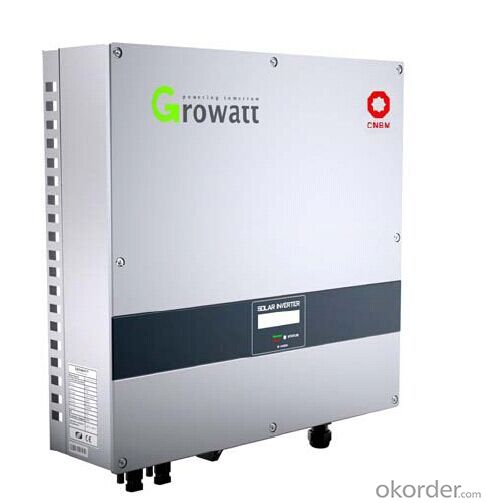
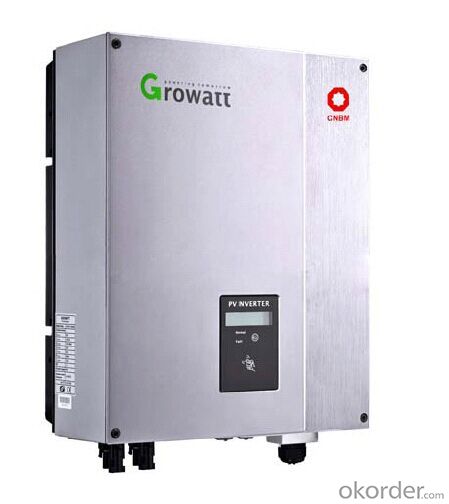
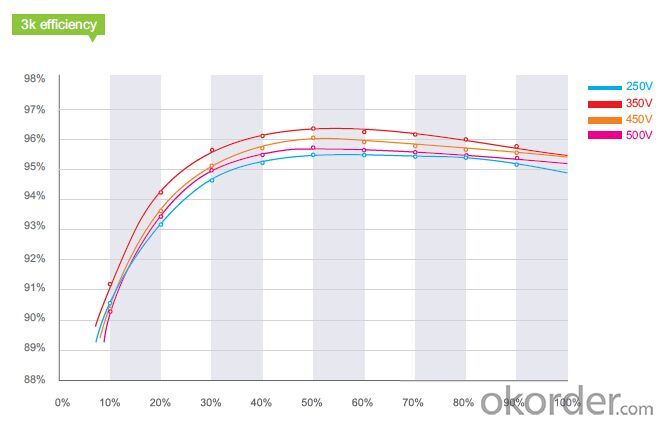
Sepecification
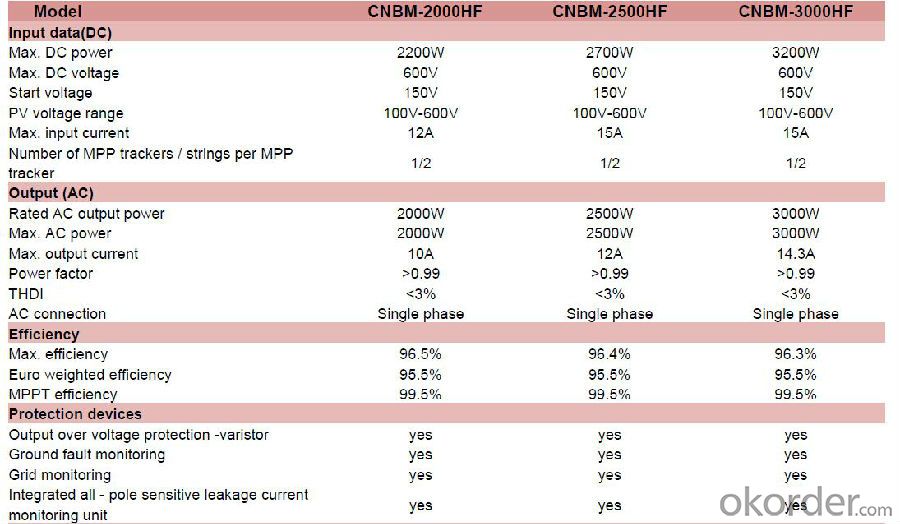
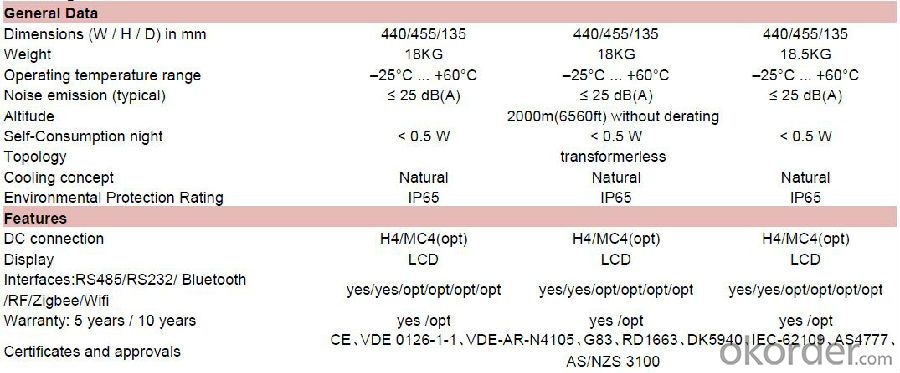
FAQ
Q1: How to choose a right inverter?
A1:Tell us your demand, then our sales will recommend a suitable inverter to you.
Q2: What's the different between inverter and solar inverter?
A2: Inverter is only accept AC input, but solar inverter not only accept AC input but also can connect with solar panel to accept PV input, it more save power.
Q3: How about the delivery time?
A3: 7 days for sample; 25 days for bulk order.
Q4: What is the warranty of inverter?
A4: 5/10 years warranty on CNBM-Solar product.
Q5: How to solve the technical problem?
A5: 24 hours after-service consultancy just for you and to make your problem to solve easily.
- Q: How does the harmonic distortion affect the performance of a solar inverter?
- Harmonic distortion affects the performance of a solar inverter by introducing unwanted frequencies and distortion in the output waveform. This can lead to reduced efficiency, increased power losses, and potential damage to connected electrical devices. It can also cause electromagnetic interference and compatibility issues with the utility grid or other connected systems. Therefore, minimizing harmonic distortion is crucial to ensure optimal performance and reliable operation of a solar inverter.
- Q: Can a solar inverter be used with solar-powered water pumps?
- Yes, a solar inverter can be used with solar-powered water pumps. A solar inverter converts the DC power generated by solar panels into AC power, which is suitable for running various electrical devices, including water pumps. This allows the solar panels to directly power the water pump, enabling it to operate efficiently using renewable energy from the sun.
- Q: What are the indicators of a faulty solar inverter?
- Some indicators of a faulty solar inverter include a complete loss of power generation, inconsistent or fluctuating power output, unusual noises or smells coming from the inverter, error messages or warning lights on the display panel, and physical damage or overheating of the inverter unit.
- Q: Can a solar inverter be used in systems with different module efficiencies?
- Yes, a solar inverter can be used in systems with different module efficiencies. Solar inverters are designed to convert the DC power generated by solar modules into AC power that can be used in the electrical grid or for consumption. They are generally compatible with a wide range of module efficiencies and can efficiently handle different power outputs from the solar panels. However, it is important to ensure that the inverter's power rating matches the system's total power output to ensure optimal performance and efficiency.
- Q: How does a solar inverter handle variations in solar panel degradation over time?
- A solar inverter is designed to handle variations in solar panel degradation over time by continuously monitoring the output of the solar panels and adjusting its operation accordingly. It helps to optimize the power generation by compensating for any decrease in panel efficiency due to degradation. This is achieved through advanced algorithms and maximum power point tracking (MPPT) technology, which ensures that the inverter operates at the optimal voltage and current levels to extract the maximum power from the panels, even as their performance degrades over time.
- Q: Does a solar inverter require any additional cooling or ventilation?
- Yes, a solar inverter typically requires additional cooling or ventilation to operate efficiently and prevent overheating. The heat generated during the conversion of DC to AC power needs to be dissipated to maintain optimal performance and prolong the lifespan of the inverter.
- Q: What is the role of a solar inverter in preventing islanding?
- The role of a solar inverter in preventing islanding is to constantly monitor the electrical grid and immediately disconnect from it if it detects a fault or disruption. By disconnecting from the grid, the solar inverter ensures that it does not continue to generate power and create a self-sustaining island of electricity, which could pose a safety risk for utility workers attempting to fix the fault.
- Q: Can a solar inverter be used with a solar-powered electric vehicle charging infrastructure?
- Yes, a solar inverter can be used with a solar-powered electric vehicle charging infrastructure. A solar inverter converts the direct current (DC) electricity generated by solar panels into alternating current (AC) electricity that can be used to charge electric vehicles. This allows for efficient and sustainable charging of electric vehicles using the power generated from solar energy.
- Q: What are the different types of solar inverters available?
- There are several types of solar inverters available, including string inverters, microinverters, and power optimizers.
- Q: Can a solar inverter be installed indoors or outdoors?
- A solar inverter can be installed both indoors and outdoors, depending on the specific requirements and preferences of the installation. However, it is essential to consider factors such as available space, ventilation, temperature regulation, and protection from environmental elements when deciding on the installation location.
Send your message to us
Solar Inverter Canada - CNBM-4400TL Grid-Tie Solar Inverter with Energy Storage Hybrid Solar Inverter
- Loading Port:
- China main port
- Payment Terms:
- TT OR LC
- Min Order Qty:
- 1000 watt
- Supply Capability:
- 100000 watt/month
OKorder Service Pledge
OKorder Financial Service
Similar products
Hot products
Hot Searches
Related keywords
